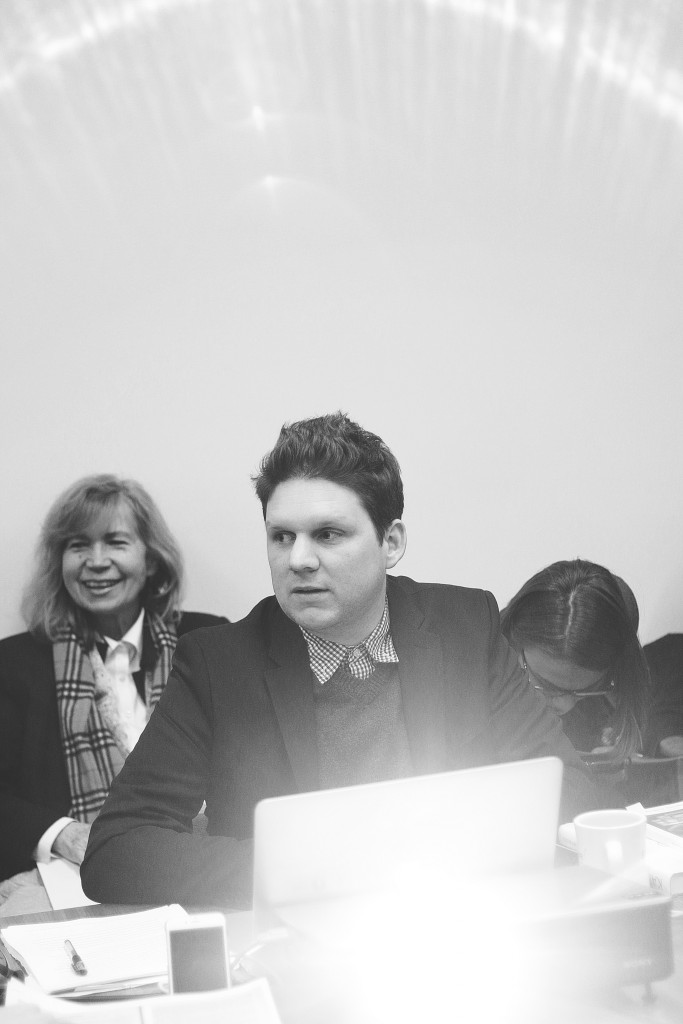
A Binghamton University professor is looking at almost 100-year-old photography not just as art, but as a glimpse of how modernity overtook the natural world of the time.
Carl Gelderloos, an assistant professor of German, presented “National Histories of Photography in Weimar Germany.” This marked the semester’s first VizCult, the Harpur College Dean’s Speaker Series talk, on Wednesday night in the Fine Arts Building.
The VizCult speaker series seeks to find individuals on- or off-campus who are involved with visual culture, or an aspect of culture expressed through images, to highlight ideas regarding gender, sexuality, race, class, ethnicity and nationality. The series has gone on for more than 20 years, with eight to 10 speakers per year.
Gelderloos focused on images from photobooks by film critics Alfred Doblin, Siegfried Kracauer, August Sander and Karl Blossfeldt, and pointed out the authors’ interpretations’ origins and the contradictions he found within them.
According to him, since modernity in the 1920s is frequently documented, the natural world is commonly overlooked. He said that many people ignore the natural world when interpreting images, since the camera symbolizes technology while the natural world is thought of as a more archaic concept. His commentary is part of a larger project in which he explores the ways people thought about technology and modernity in Germany in the 1920s.
“I think it speaks for itself,” Gelderloos said. “Without events like this, what is a college? It’s not just about teaching, but about intellectual exchange and conversation.”
German photography of the 1920s is often associated with the objectivity, speed and dynamism of machinery, Gelderloos said. He said that many images he presented combined nature and urban life. Examples included people working in front of a neutral background, or farmers in suits, to show that although life was becoming industrialized, the natural aspects remained.
Among the images in his slideshow presentation were portraits that represented professions such as “clergy,” “pastry chef,” “doctor,” “small-town family,” “bricklayer” and “communist leader.” He said it was not just the images that de-individuate, but also the captions that defined the subjects by their occupations. He looked at an image titled “revolutionaries” and assessed that the overlap of their shoulders implied that they were unified, separated from society and nonconformists.
Julia Walker, an assistant professor of art history, said that Genderloos was chosen because students had spoken highly of him, and because his work deals closely with photography.
“It is wonderful to bring undergraduates and graduates from around the University who work with visual materials; it’s a really interdisciplinary thing,” Walker said. “It’s open to everyone — well, everyone who can fit.”
Alex Feim, a fifth-year graduate student studying art history, said she took a class with Gelderloos last spring, but wanted to hear him talk about his own work.
“Hearing him talk about the discourse and hearing some of the contradictions I thought was really great,” Feim said. “It’s a chance to learn something about what your professor’s actually doing, because they teach you something in the curriculum but you often don’t hear what they’re working on personally.”


